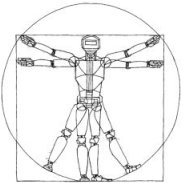Robotics: Science and Systems VIII
What Types of Interactions do Bio-Inspired Robot Swarms and Flocks Afford a Human?
Michael Goodrich, Sean Kerman, Brian Pendleton, P.B. SujitAbstract:
"This paper uses simulations to identify what types of human influence are afforded by the flocking and swarming structures that emerge from Couzin's bio-inspired model. The goal is to allow a human to influence a decentralized agent collective without resorting to centralized human control. Evidence is provided that, when nominal agents use switching-based control to respond to human-guided predators and leaders, the resulting behavior is responsive to human input but is obtained at the cost of causing the dynamic structure of the collective to follow a single flocking structure. Leaders are more effective in influencing coherent flocks, but predators can be used to divide the flock into sub-flocks, yielding higher performance on some problems. Introducing a so-called ""stakeholder"" leadership style makes it possible for a human to guide the agents while maintaining several different types of structures; doing so requires more than one human-controlled agent. We then demonstrate that it is possible to produce potentially useful emergent dynamics without centralized human control, and identify an important type of emergent dynamics: automatic switches between structure types."
Bibtex:
@INPROCEEDINGS{Goodrich-RSS-12,
AUTHOR = {Michael Goodrich AND Sean Kerman AND Brian Pendleton AND P.B. Sujit},
TITLE = {What Types of Interactions do Bio-Inspired Robot Swarms and Flocks Afford a Human?},
BOOKTITLE = {Proceedings of Robotics: Science and Systems},
YEAR = {2012},
ADDRESS = {Sydney, Australia},
MONTH = {July},
DOI = {10.15607/RSS.2012.VIII.014}
}
